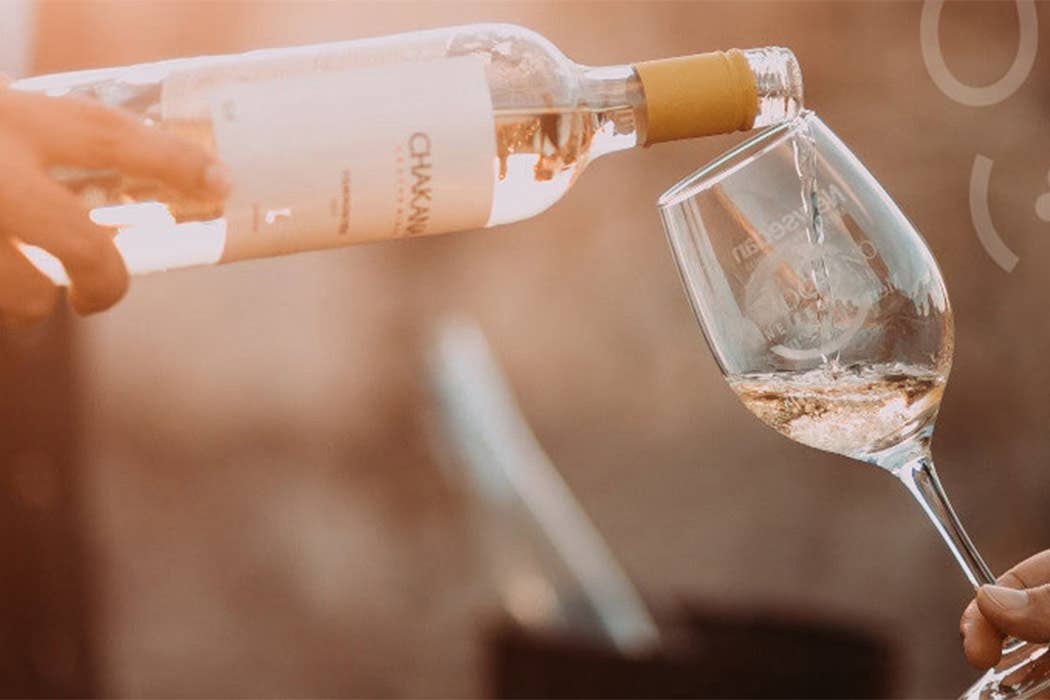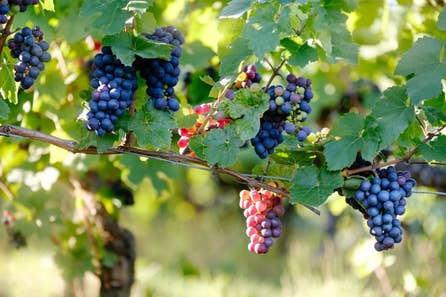Sweet, dessert & aromatic wines

When you’re looking for a fragrant, fruity wine with sweet flavours and a gorgeous aroma, chances are a sweet, dessert or aromatic wine is best for you.
Let’s explore how these wines taste, and how to serve them to create the best drinking experience.
Popular sweet wines in New Zealand
What is sweet wine?
Sweet wine tends to be fruity and flavourful, with strong berry, ginger or honey notes. Tastes of jam, sweet citrus, raisins and even lollies are also common.
These wines can range from very sweet (i.e. dessert wines) to semi-sweet, where the flavour is often more floral than sugary. Moscato and sweet Rieslings are popular sweet to semi-sweet options here in New Zealand, though it’s common to find sweet Gewürztraminer and Pinot Gris too.
Related: Wines from sweet to dryQuick guide to the different types of wineOur pick of the best New Zealand white wines
Sweet white wines
Semi-Sweet Very Sweet← Sweetness →Pinot Gris -Gewürztraminer - Riesling -Moscato
Check the label carefully before buying, as many of these wines also come in dry varieties.
Moscato
Moscato is one of the sweetest white wines available - very fruity, but with a signature grapefruit aroma. Moscato tends not to be very acidic, making it popular with newer wine drinkers. It features notes of tropical fruit flavours like ripe pear, orange blossom, lemonade and honeysuckle.
Shop Moscato
1 / 0
Riesling
Sweeter Rieslings are often bold and full of citrus or stone fruit flavours. Notes of peach, lemon and lime are common, plus crisp apple and rose blossom.
Shop Riesling
1 / 0
Gewürztraminer
Gewürztraminer is a heavier, bolder white. It often features spicy cinnamon-like flavours and a touch of bitterness, plus unique aromas of lychee and rose petals.
Shop Gewürztraminer
1 / 0
Pinot Gris
Pinot Gris is a famously diverse wine, featuring options packed with zest as well as rich, spicy variants with a fuller body.
Shop Pinot Gris / Grigio
1 / 0
Sweet red wines
Semi-Sweet Very Sweet ← Sweetness →Merlot -Malbec - Garnacha - Zinfandel - Fortified Wine
Check the label carefully before buying, as many of these wines also come in dry varieties.
Merlot
Merlot is a bold, fruit-forward red with big cherry, plum and strawberry notes. It’s common to find herbs, spices and other unique flavours in a merlot too, such as cloves, chocolate, green bell pepper and liquorice.
Shop Merlot
1 / 0
Malbec
Malbec is a full-bodied red often described as having ‘oomph’. It’s full of juicy red-fruit flavours, including pomegranate, and the oak ageing process can also give it vanilla, sweet tobacco, dark chocolate and oak notes.
Shop Malbec
Garnacha/Grenache
Garnacha, aka Grenache, is a punchy, deeply aromatic red with a medium body packed with strawberry, raspberry, star anise, cinnamon, white pepper, tannins and herbs.
Zinfandel
Zinfandel is often described as being quite similar to Merlot, but deeper and more complex in flavour. It packs much of the same red berry punch, plus brambles, spiced plum, vanilla and spices.
Fortified wine
Fortified wines are wines in which a distilled spirit has been added, commonly brandy. This gives the wine a greater alcohol kick and a host of complex extra flavours - often making it sweeter.
Port and Sherry are two common terms for fortified wine, but on some labels you’ll see ‘made in the style of’ instead. The winemakers can’t always call their product by the common name unless it was made in a specific location - Port, for example, must come from the Douro Valley in Portugal.
Shop red blends
1 / 0
Sweet Roses
Rose
The sweetness and flavour of Rose depends on the grapes used to create it, and the length of time the juice stays in contact with the grape skins during the winemaking process. Paler Rose is often lighter and sweeter, with delicate flavours of strawberry, rose petals, melon and red fruits.
Moscato Rose
Rose made from Moscato grapes tends to be the sweetest, a dessert wine more than just a sweet wine. Pink Moscato, as it’s also often called, is full of berry and lolly notes.
What to serve with sweet wine
Sweet wines can be paired with a variety of dishes to suit all occasions, depending on the level of sweetness.
Semi-sweet wines are the easiest to pair, going particularly well with acidic or salty foods. If your wine is bolder, it’ll match better with richer foods (like red meat or creamy pasta). If your wine is milder, pair it with a delicate dish such as seafood or salad. As for very sweet wine, that tends to go with pudding or cheese - it’ll usually be too sweet to go with a main.
Food | Wine Pairing Tips |
| Red Meat | Pair with bolder wines like sweet reds or Gewürztraminer. Match the wine to the boldest flavour on the plate, usually the sauce. |
| Chicken | Gewürztraminer and darker Rosé suit bold sauces. Zinfandel and Pinot Gris work well with grilled or herbaceous flavours. For chicken salads, go with pale Rosé or Riesling. Sweet glazes call for sweeter wines. |
| Pasta | “White with white, red with red.” Heavy red sauces pair with bold reds; creamy sauces with medium to full-bodied whites. Sweet sauces match with similarly sweet wines. |
| Seafood | Light seafood pairs well with creamy, zesty, and light whites. Stronger flavours may need fuller wines like Pinot Gris or Gewürztraminer. |
| Salad | Delicate flavours suit pale Rosé. Heavier dressings require heavier wines. Match sweetness levels accordingly. |
| Cheese Platters | Pair bold with bold, creamy with creamy, spicy with spicy. Port-style fortified wines are popular with strong cheese platters. |
| Dessert | Match sweetness levels between dessert and wine. Too-sweet desserts can make wine taste thin. |
| Nothing | Dessert wines are delightful on their own and don’t need pairing. |
Dessert wine
Is dessert wine different from sweet wine?
Dessert wines are always sweet, but sweet wines aren’t always dessert wines.
Dessert wines tend to be packed full of those very sweet flavours and have a higher sugar content. Bright fruity notes, lollies and strong florality are common here. Fortified wine is also considered dessert wine, with that bolder, sweeter flavour.
How is dessert wine made?
Dessert wines are made from highly sugary grapes that, after fermenting, have enough residual sugar to give the wine a luscious sweetness. New Zealand wine producers use three techniques to enhance the sweetness of their grapes:
| Late Harvest | Grapes are left to over-ripen on the vine, concentrating sugar levels for a richer, sweeter wine. |
| Noble Rot | Botrytis Cinerea fungus reduces water content in grapes, intensifying sugar and adding flavours of ginger and honey. |
| Ice Wine | Grapes freeze on the vine and are harvested while frozen. Water stays frozen while sugar forms a syrup, which is pressed and fermented. |
Buying dessert wine in New Zealand
Moscato, Moscato Rose and Port-style fortified wine are the three most common dessert wines in New Zealand supermarkets.
Sparkling dessert wine
While bubbles and high acidity tend to make sparkling wine less sweet than non-sparkling alternatives, there are plenty of sweeter sparkling wines to try at dessert or when celebrating an occasion.
Grape varietals to look for | Keywords to look for |
| Moscato | Moelleux, Doux, or Demi-Sec |
| Spumante | Amabile, Dolce or Semi Secco |
| Riesling | Avoid Sec, Sekt or Secco, as these mean ‘dry’. |
| Gewürztraminer | Avoid Brut, as this is also a dry style |
Aromatic wine
What is aromatic wine?
Aromatic wine, also called ‘aromatics’, are white wines with a range of dominant floral aromas that have been preserved from the grape.
Common aromatics of New Zealand
Riesling - Pinot Gris - Moscato - Gewürztraminer - Albariño - Viognier
What makes aromatic wines aromatic?
Aromatic wines contain an aroma more commonly found in roses, lavender, geraniums and citrus blossoms, giving them a wonderful florality. Technically speaking, this is because they share a compound in common with many flowers, and this comes through from the grape to the glass.
It’s fun to smell every kind of wine, but the joy of an aromatic is next-level.
Pairing aromatics with food
Given their strong scent, it’s common to pair aromatics with dishes that benefit from a powerful aroma. If a lovely, floral scent would go well with the dish, an aromatic will probably suit. The thing to remember is that they’re still white wines and are often delicate in flavour, so consider pairing with lighter dishes.
How to store sweet or aromatic wines
Aromatic or sweet wines can be aged for around five years - just don’t open or drink them first or they won’t survive. For sweet and fortified wines in particular, the higher sugar and acidity helps them age well, acting like natural preservatives.
Store any bottle you wish to age in a cool, dark place - 12 degrees C is an ideal temperature, with limited fluctuations and no chance sunlight will touch the bottle.
If the bottle has a cork instead of a screwcap, store it on its side. This will bring the wine into contact with the cork, preventing air from getting in and oxidising the wine.
Unless you intend to cellar and age a wine, you should generally only open it if you intend to drink it all within 48 hours.
Air is the enemy of an open wine bottle, oxidising the drink and turning it sour.
To slow down this process, always reseal your wine and store it in the fridge for up to a couple of days. If you can’t reseal it (either by losing the cap, or because it came with a cork), consider investing in a vacuum cork or similar device to remove the air for storage.
Wines tend to grow more acidic and musty the longer they sit open. Signs that your wine is passing its use-by date include:
- The smell is getting musty or vinegary. - The colour is dulling or turning brown. - The taste is growing flatter or more sour.
If in doubt, tip it out.
Serving sweet and aromatic wines
When serving sweet and aromatic wine, generally you’ll chill them and serve in a tulip-shaped glass. That will help to bring out the delicate flavours and aromas, and keep those smells in the glass for you to enjoy as you drink.
Sweet and aromatic wines are typically best enjoyed chilled (but not cold), including both white wines and sweeter reds. Anywhere from 5 to 10 degrees Celsius is appropriate.
Your fridge is likely a bit below this temperature, so consider chilling your sweets and aromatics in the fridge, then taking them out for a bit before serving to warm up slightly.
Find out more about serving wine
Sweet wines and especially aromatics are known for their strong aromas, so you’d typically serve them in tulip glasses.
Tulip glasses are red wine glasses with a wide base and a narrower rim. This shape helps to trap the wine’s aroma, so you can inhale more of the delicious smell before you sip.
Serving fortified wine
It is recommended that you serve a Port-style fortified wine in a similar glass to dessert wine, i.e. a tulip. You’ll notice that authentic Port glasses share the same shape.
Serving sparkling dessert wine
Serve your sparkling dessert wine in a Champagne flute with a tapered rim, so the opening is once again narrower than the base.
The elongated shape of a flute helps to preserve the effervescence of the drink, while the narrow opening, as with tulip glasses, helps to trap the aroma and provide a greater sensory experience when drinking.
For sweet and aromatic wine, where the aroma is a huge part of the experience, don’t fill the glass up by more than a third or so. That will leave lots of room to swirl the drink around and so there’s plenty of space for the aroma to build.



































































